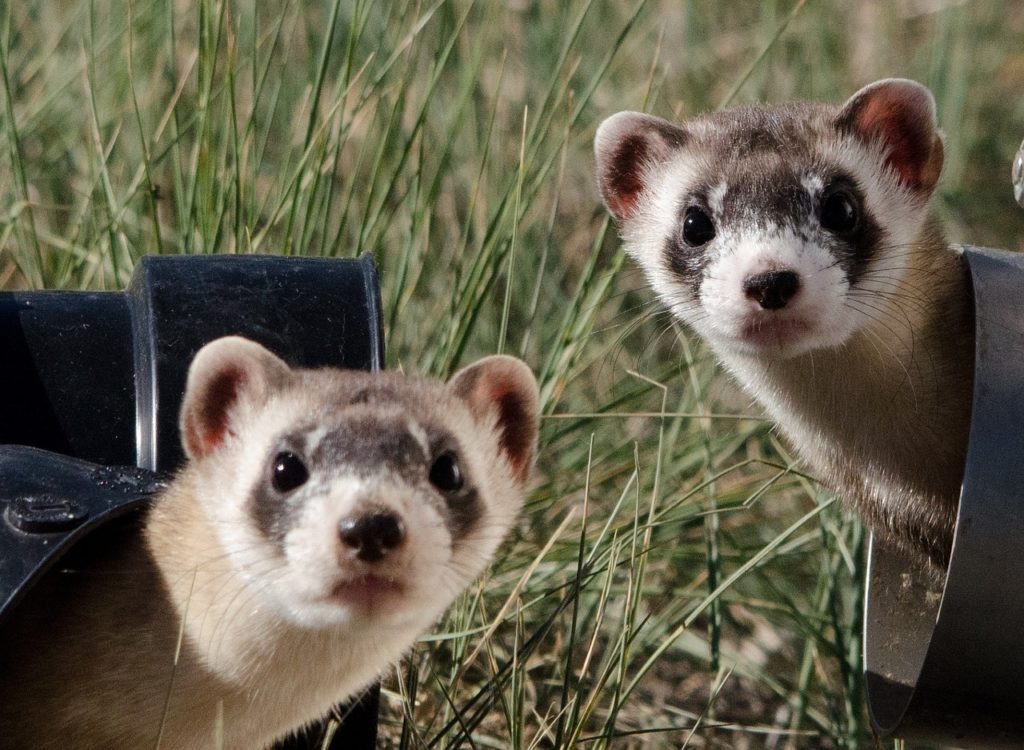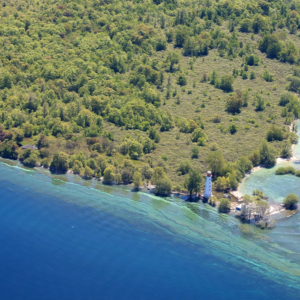Black-footed Ferret
The Black-footed Ferret
The only ferret native to the great Canadian wilderness, the Black-footed Ferret (Mustela nigripes) is a very charming creature. These tan-bodied ferrets are only six-inches tall, with a black-tipped tail, black mask and signature black feet.
Although small and slender, their carnivorous instincts makes them fierce nocturnal predators. The ferret preys on Prairie Dogs for 90% of their diet and also take over their burrows. This makes the Black-footed Ferret dependent on the Prairie Dogs’ population. Once the two species shared the Great Plains of North America, but the Black-footed Ferret went extinct in the area by 1937.

courtesy of Pixabay
Desperate Times for the BFF
The agricultural boom in the early 1900s took its toll and resulted in the species being severely threatened in the 1930s. Ranchers and farmers consumed their territory, dividing the ferret’s habitat.
By 1974, the Black-footed Ferret was believed to be globally extinct in the wild. There wasn’t a shred of hope in seeing these creatures in their natural habitat again, until a small population was discovered on a farm in Meeteetse, Wyoming. The Black-footed Ferret is now the rarest mammal in North America, their total population being only 18 by 1987.
The Toronto Zoo has been working on a recovery plan for the Canadian population of the Black-footed Ferret since 1992. The program gives researchers the opportunity to study them in close-quarters while rebuilding the population. The males are generally larger than the females, but only slightly, their lengths varying from 18-24 inches. In captivity, they can live to nine years, but in the wild, three years is the average lifespan.
Thanks to the efforts of a dedicated few, the Black-footed Ferret’s Canadian population in the wild is returning to numbers no one thought possible.
Canadian Pride—Into the Wild
Reintegrating the Black-footed Ferret into Canada’s Prairie Grasslands has had its ups-and-downs. Since the 1980s, Black-footed Ferrets have only been bred, born and raised in captivity.
Their territory once spanned from Northern Mexico, upwards throughout the American Mid-West, and ended in the grasslands of southern Saskatchewan and Alberta. Currently, Grasslands National Park houses the largest population of Black-footed Ferrets in all of western Canada.
Black-footed Ferrets are still highly endangered. Exotic illnesses like the sylvatic plague and canine distemper threaten populations. Habitat destruction due to suburban and urban development leads to the loss of their main food supply, the Prairie Dog. Reclaiming their home in the Prairie Grasslands of North America is still an uncertain task. There is an urgency to not only preserve their new wild populations, but to share the importance of the Grasslands.
The Prairie Grasslands ecosystem is the most endangered on our planet. This seems like a bold statement, but with our forests and oceans getting a lot of needed attention, this vital landscape goes unnoticed.
Our Grasslands need just as much help. Home to rare animals, over 70 species of grass, and 50 different wildflowers, this ecosystem is essential to their survival. The Black-footed Ferret now calls Grassland National Park home for the first time since the early 20th century. To continue its success, we’ll need to protect more grassland areas and take care of what is left.


